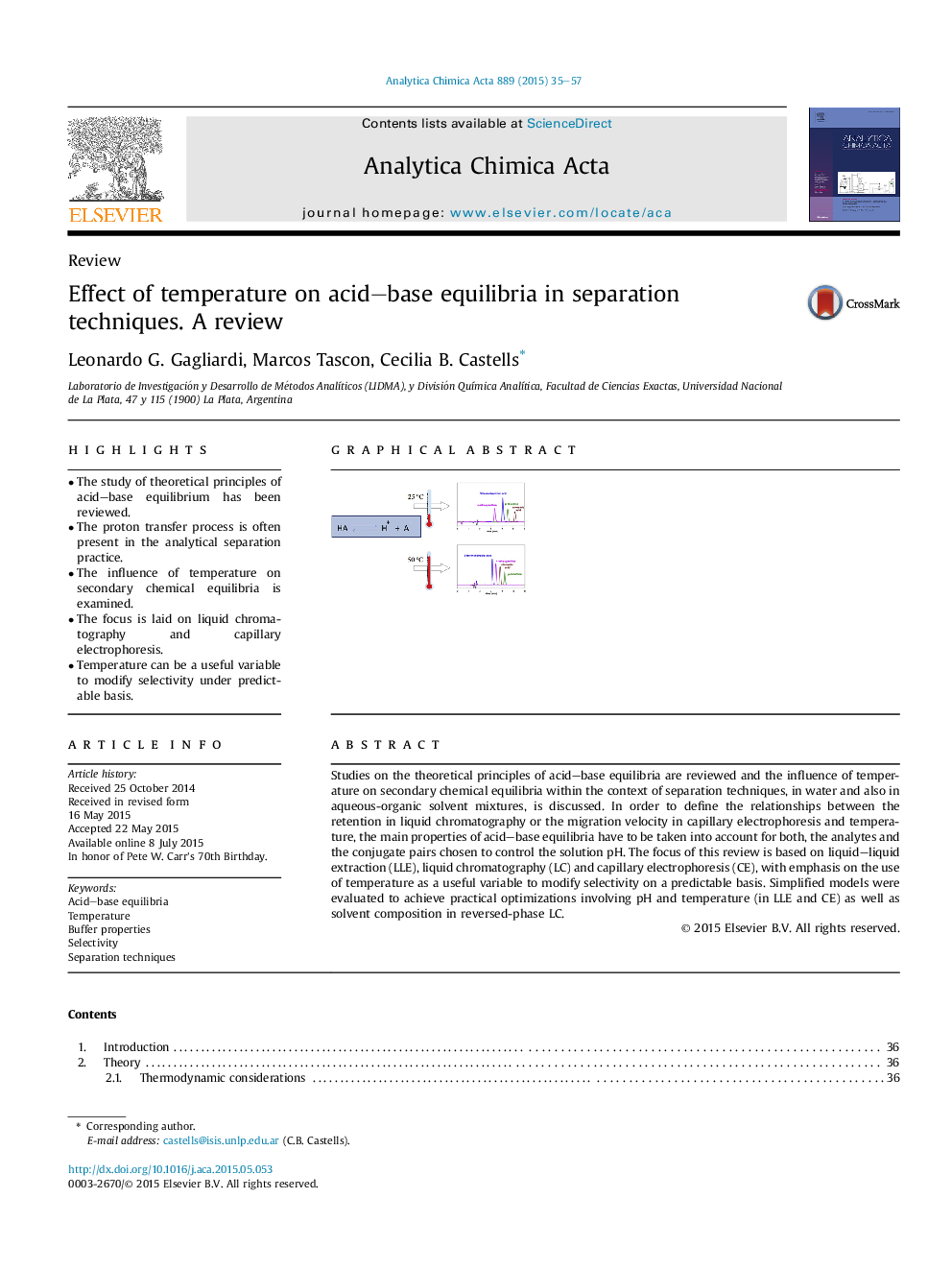| Article ID | Journal | Published Year | Pages | File Type |
|---|---|---|---|---|
| 1163499 | Analytica Chimica Acta | 2015 | 23 Pages |
•The study of theoretical principles of acid–base equilibrium has been reviewed.•The proton transfer process is often present in the analytical separation practice.•The influence of temperature on secondary chemical equilibria is examined.•The focus is laid on liquid chromatography and capillary electrophoresis.•Temperature can be a useful variable to modify selectivity under predictable basis.
Studies on the theoretical principles of acid–base equilibria are reviewed and the influence of temperature on secondary chemical equilibria within the context of separation techniques, in water and also in aqueous-organic solvent mixtures, is discussed. In order to define the relationships between the retention in liquid chromatography or the migration velocity in capillary electrophoresis and temperature, the main properties of acid–base equilibria have to be taken into account for both, the analytes and the conjugate pairs chosen to control the solution pH. The focus of this review is based on liquid–liquid extraction (LLE), liquid chromatography (LC) and capillary electrophoresis (CE), with emphasis on the use of temperature as a useful variable to modify selectivity on a predictable basis. Simplified models were evaluated to achieve practical optimizations involving pH and temperature (in LLE and CE) as well as solvent composition in reversed-phase LC.
Graphical abstractFigure optionsDownload full-size imageDownload as PowerPoint slide
